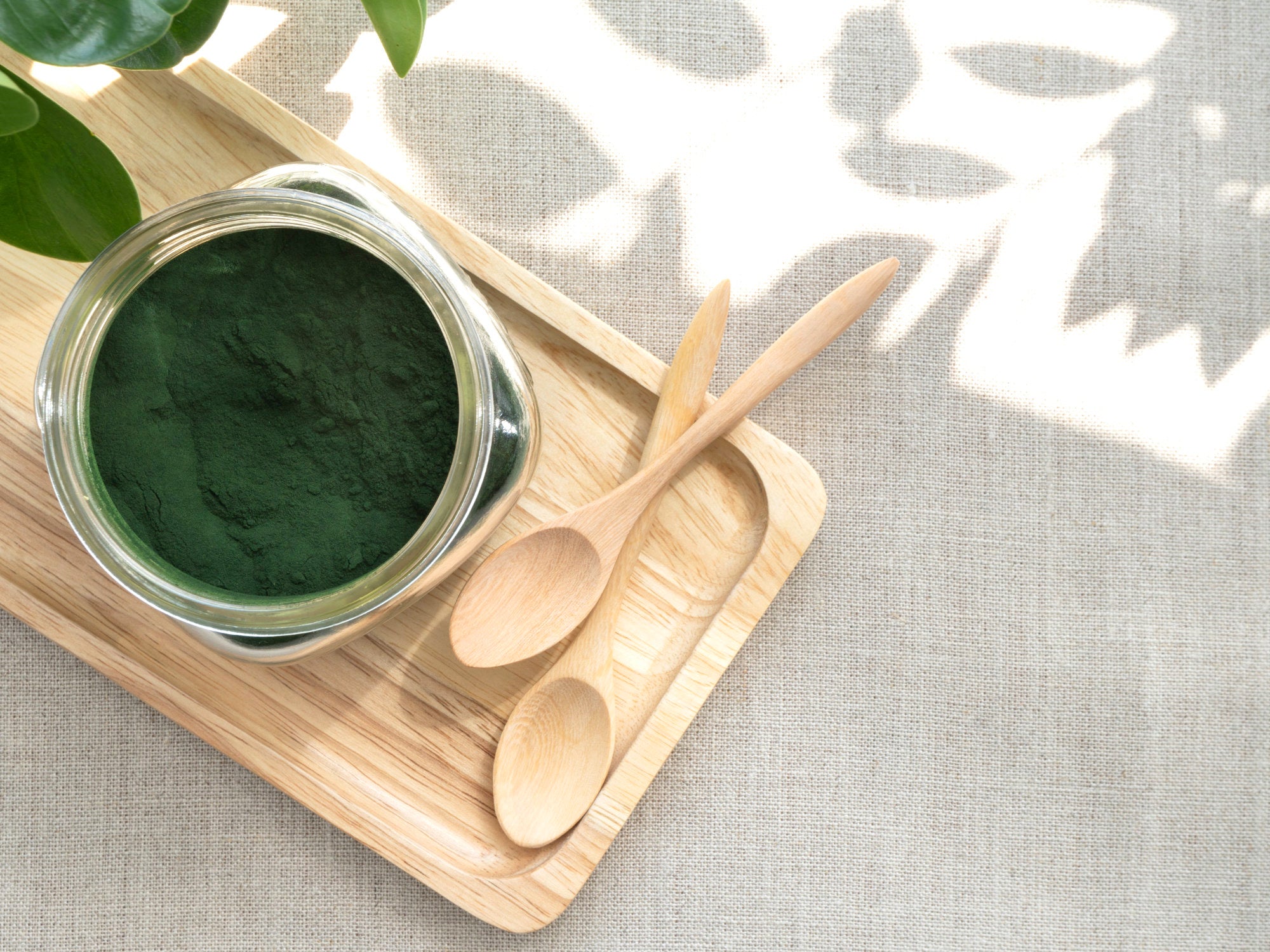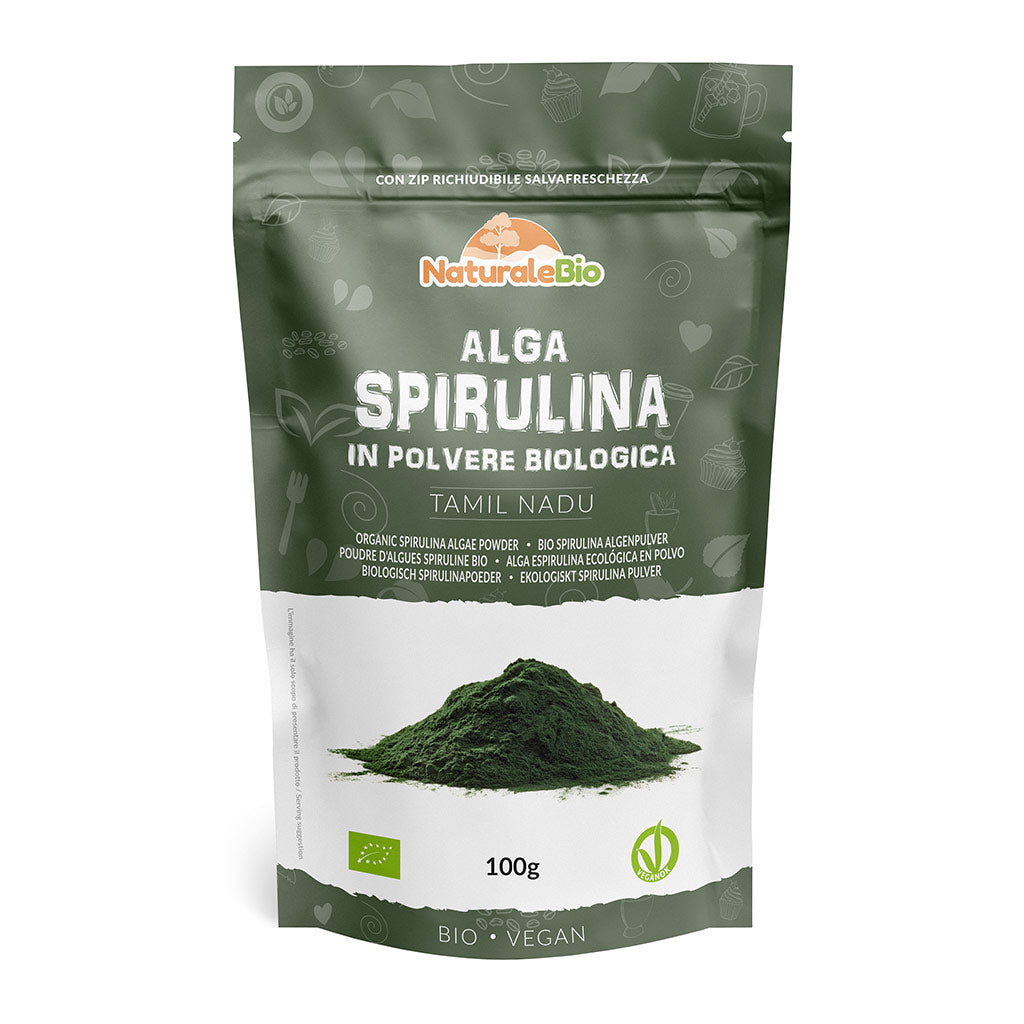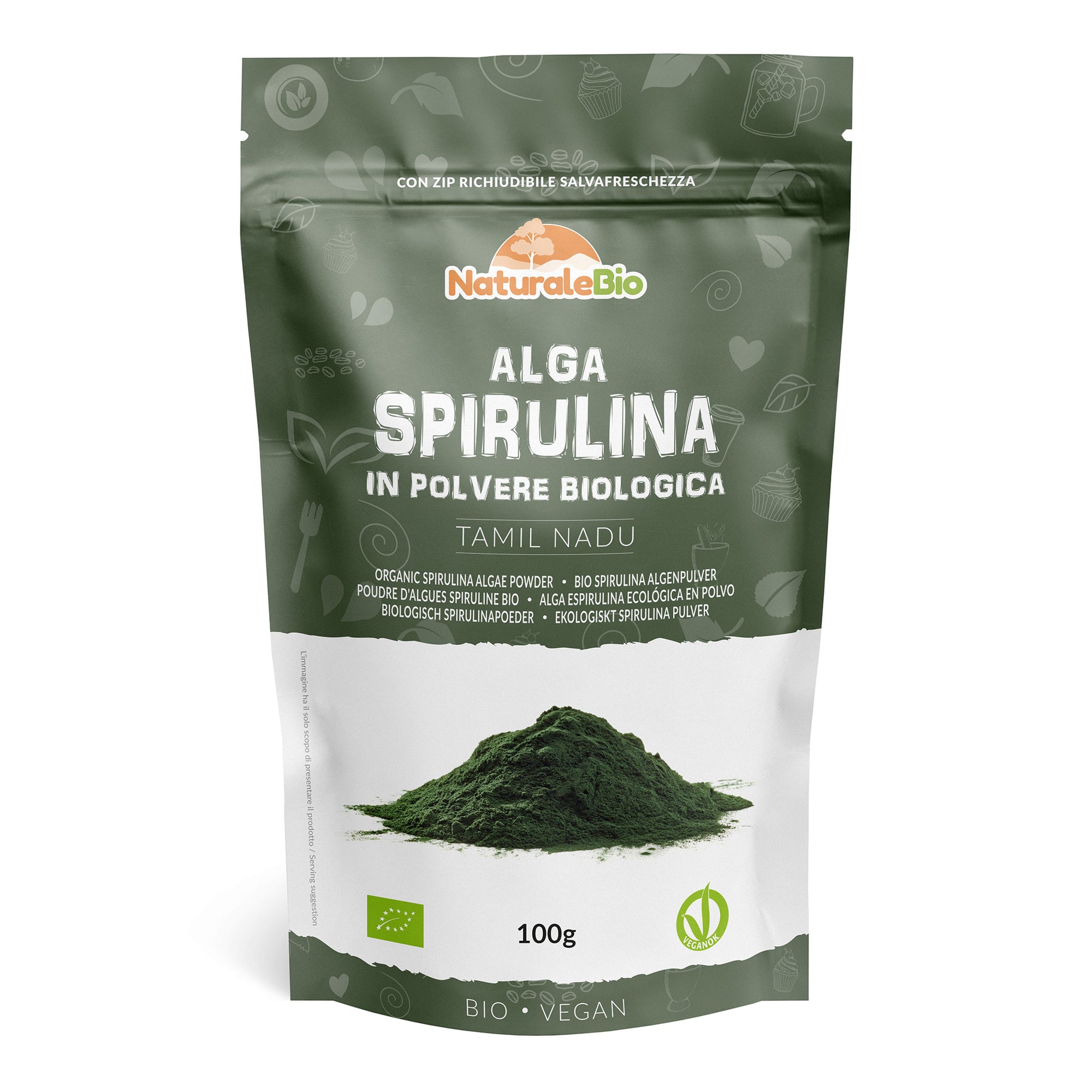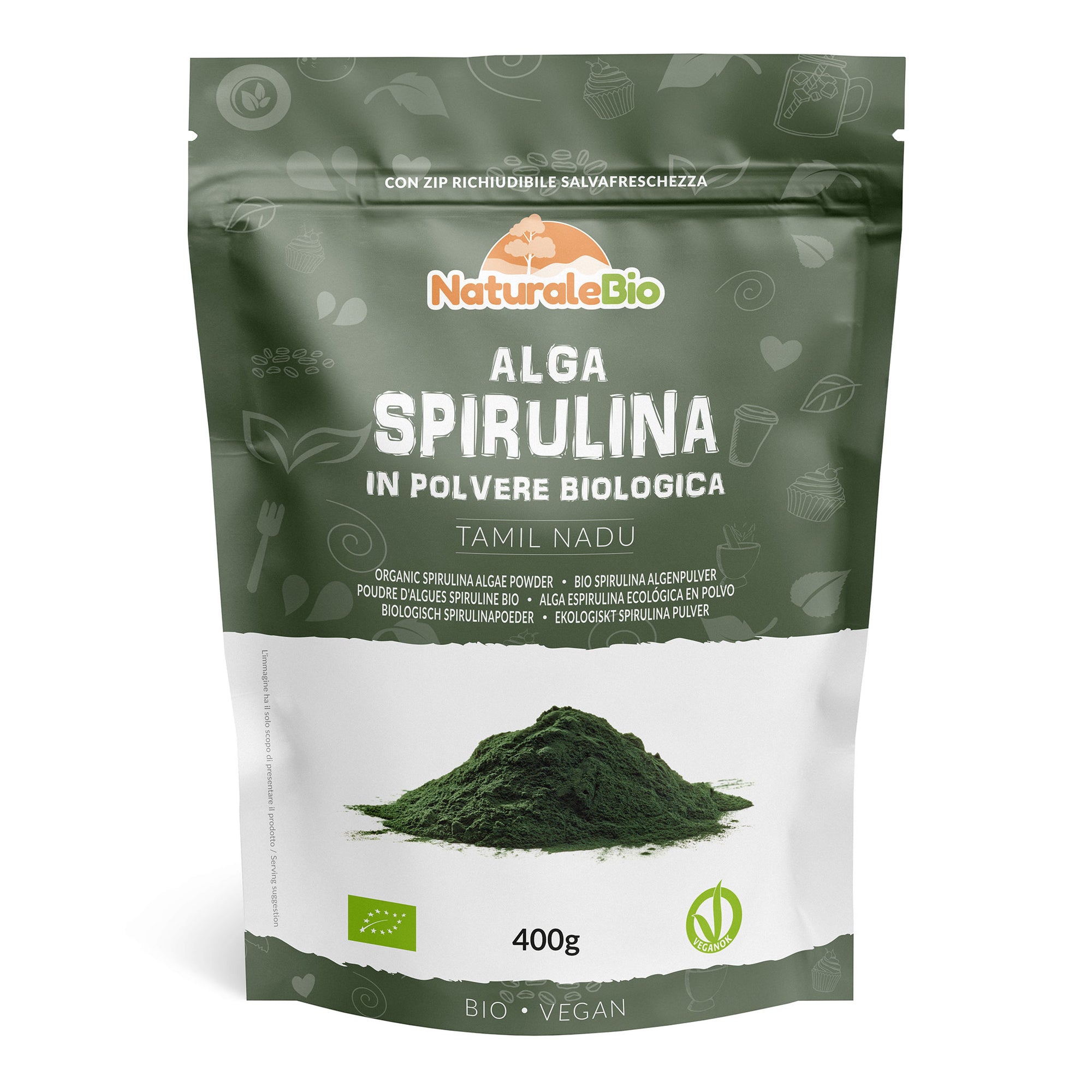
Discover the Nutritional Benefits of Spirulina Algae
Spirulina algae is garnering increasing interest and curiosity… even NASA has chosen it as a food to cultivate during long-duration space missions!
This is because it is one of the most nutrient-dense foods in the world, possessing truly exceptional nutritional values.
Its high content of fiber and protein, richness in vitamins and minerals, and presence of essential amino acids, which are not produced by our body and must be introduced through the diet, make spirulina a truly extraordinary superfood.
Let's delve into what it is, its properties, and what it is used for.
What is Spirulina Algae?
Spirulina is a freshwater algae belonging to the class of single-celled spiral-shaped algae and has ancient origins.
It belongs to the class of blue-green algae, but its color is dark green due to the presence of chlorophyll, with blue hues attributed to the pigment phycocyanin.
Its name derives from its spiral shape; indeed, this algae is made up of microscopic helical and spiral filaments that are not visible to the naked eye.
Its botanical name is Arthrospira platensis, a species belonging to the class Cyanobacteria (Cyanobacteria) that develops in freshwater lakes or streams.
It prefers alkaline environments, is a very resilient algae, and comes in many different varieties.
The History of Spirulina
Spirulina represents one of the simplest forms of life on Earth and has existed since its appearance, being a crucial part of the food chain.
The earliest records of this incredible algae date back to the Aztec people, where it was used to prepare a typical dish called "tecuitlati" and also as a remedy for fatigue and inflammation.
Historically, other populations that have widely used this extraordinary algae include those in Mexico City, Central America, the Chad region in Africa, and India.
In recent years, spirulina has been increasingly appreciated for its high nutritional value and beneficial properties.
The WHO (World Health Organization) considers it "the best food of the 21st century," while the UN declared it "the best food for the future" during the World Food Conference in 1974.
Spirulina: Properties and Benefits
Spirulina is a natural source of protein, which contributes to the growth and maintenance of muscle mass, making it a special food for athletes, as well as for those following a vegetarian or vegan diet.
It also has a high iron content, which contributes to the reduction of tiredness and fatigue and to the normal transport of oxygen in the body, which can help in cases of anemia .
Iron also contributes to normal cognitive function and the immune system .
It has a high vitamin K content, which contributes to normal blood coagulation and the maintenance of normal bones.
It contains folic acid, which contributes to normal hematopoiesis and normal homocysteine metabolism, and finally, phosphorus, which contributes to normal energy metabolism.
Spirulina has antioxidant properties, also due to the presence of phycocyanin, which is believed to counteract the action of free radicals . It has purifying properties and may have anti-aging effects on the skin .
How to Consume Spirulina
The taste of Spirulina is very particular, with a hint of grass due to the presence of chlorophyll and a hint of the sea, although compared to other algae, it is less pronounced as it is a freshwater algae with negligible iodine content.
This makes spirulina easier to integrate into your diet.
To keep all its nutrients intact, spirulina must be cold-dried, and it is preferable to choose organic-certified spirulina, which excludes the use of pesticides and chemical fertilizers harmful to our body.
Spirulina is usually found in the form of dried algae powder.
Tablets are more practical to take as a dietary supplement, while organic spirulina powder is convenient to add as a "spice" to your recipes, enriching them with flavor and making them healthier.
Uses of Spirulina
Spirulina is a versatile food and can be used in many ways:
In Drinks, Smoothies, or Teas A teaspoon of Spirulina powder can add more flavor to drinks, giving them a unique taste… it can be added to smoothies or teas.
In Cooking Recipes Spirulina powder can become a tasty ingredient in sweet and savory recipes.
In dough for cakes and cookies, bars, bread and pasta, but also as a salad dressing.
In Beauty Recipes Spirulina is an excellent food but can also be used in cosmetics.
As a base ingredient for a cream, for a nourishing face mask, a pre-shampoo treatment for straight or curly hair, or as an ingredient in a natural body exfoliant.
For Animals Even animals can benefit from taking spirulina. It can be added to bird or fish feed. It can be used for dogs, cats, but also horses or rabbits.
However, before adding spirulina to your pet's diet, it is always necessary to consult the veterinarian!
Contraindications and Side Effects
Spirulina is a safe food and when consumed in the right doses, it should not cause any particular side effects.
For this reason, it should always be taken in the right ways and quantities. In case of ingestion of an excessive amount, gastrointestinal disturbances may occur.
In case of diseases, pregnancy or breastfeeding, it is always necessary to consult a doctor before introducing spirulina into your diet.
One contraindication is the presence of vitamin K: this makes it not recommended for those undergoing anticoagulant treatments (vitamin K thins the blood).
Those taking anticoagulant or blood-thinning medications should avoid or limit the use of spirulina.
Another contraindication is for people with phenylketonuria, as spirulina naturally contains phenylalanine.
Finally, those with thyroid dysfunctions, particularly those with hyperthyroidism, and autoimmune diseases should also be cautious.
To Further Study:
Spirulina Pasta Recipe Preparation Time: ~45 min
Adding spirulina algae to your homemade pasta will bring numerous benefits to your body and also act as a natural dye, giving your tagliatelle a beautiful bright green color.
Ingredients:
10g NaturaleBio Spirulina powder
200g all-purpose flour
2 eggs
Preparation: Sift the flour into a bowl, add the spirulina, and incorporate the eggs. Knead the ingredients to combine them, flour the work surface, and continue kneading the dough. Shape the dough into a ball, wrap it in plastic wrap, and let it rest in the fridge for at least 30 minutes. Then, roll out the dough with a rolling pin until it reaches 1mm thickness and add more flour (spirulina tends to moisten). Roll up the dough sheet and cut it with a knife into tagliatelle, which you will then lay on a floured tray… you can season them as you like!






0 comments